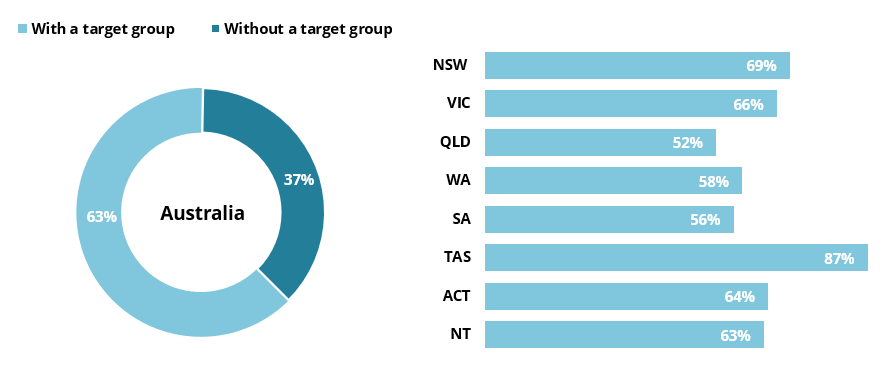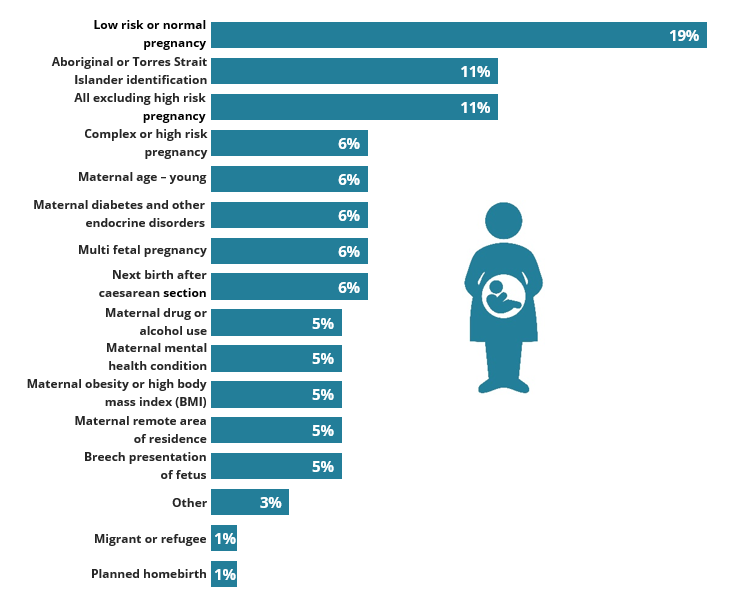Target groups
Some models of care are targeted at specific groups of women with similar characteristics. These may be based on geographical area, risk status, obstetric or medical conditions or social or cultural characteristics. Target groups are not mutually exclusive, so a model of care may have more than one target group. Around 635 (63%) models of care are targeted at specific groups of women who share a common characteristic or set of characteristics, while 37% of models are not specifically targeted to any group of women. The broad target groups of low risk or normal pregnancy, and all excluding high risk pregnancy, are reported in 19% and 11% of models of care, respectively. Aboriginal or Torres Strait Islander identification is a target group in 11% of models; this is higher in the Northern Territory (33%). Complex or high risk pregnancy is a target group in 6% of models (Figures 6a and 6b).
Figure 6a: Proportion of models of care with a target group, by jurisdiction, Australia, 2023

Figure 6b: Proportion of models of care, by target group category, Australia, 2023

Notes
- A model of care may have more than one target group, so the sum of the individual categories will be greater than the total with a target group.
- 'Other' includes any other cultural, social, maternity and vulnerable groups not already specified.
Source: AIHW analysis of the MoC NBPDS.


